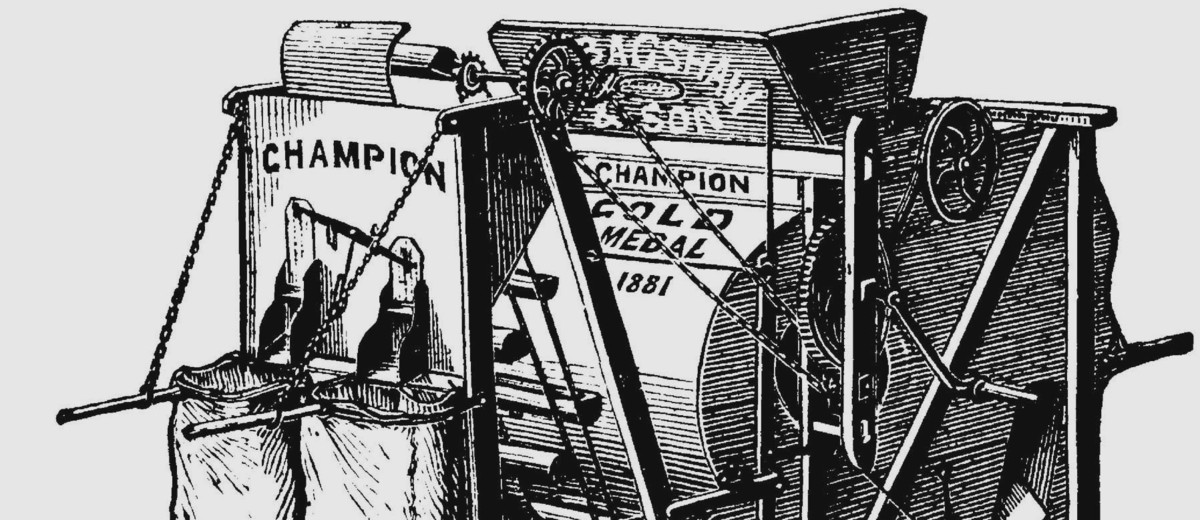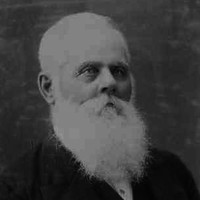Born in Chetwynd, Shropshire, England, on 15th August 1808, John Stokes Bagshaw was the son of farmers, Edward and Margaret Bagshaw. From an early age he showed an aptitude for mechanics and trained as a millwright and engineer. In 1836 he married Jane Dale and they were to have eight children. They emigrated to South Australia in the Eden, arriving in June 1838, and Bagshaw found work as a joiner in the construction of flourmills at Noarlunga, Port Noarlunga and Encounter Bay.
Ron Gibbs, in A History of South Australia (1969), points out that it was ‘the greater reliance on agriculture, especially wheat-growing, that made South Australia different from its neighbours. It was the farmer, not the squatter, who was more important in the growth of the colony and who was responsible for its name as “the granary of Australia” ’. However, there were serious shortages in the supply of farm labourers to harvest and process the crops, so farmers were urgently seeking machinery.
Having arrived at a fortuitous time for immigrants with a mechanical bent, Bagshaw had, by 1838, established an agricultural implement workshop in Elizabeth Street, Adelaide. The manufacture of wind-mills was one of the main activities at the works and, with his skills as one of the earliest pattern-makers in the colony, Bagshaw was much in demand by the newly-established foundries. In 1843 John Ridley commissioned him to make the original patterns for the first Australian stripper and Bagshaw won public recognition for his role in making a machine that could reap six acres of grain in a day.
Inspired by this success, he went on to invent the first winnowing machine in Australia. Prior to this, grain was separated from the chaff by using a flail on a hardened floor or by using horses or bullocks to walk over the grain, after which it was manually sieved. The first Bagshaw winnowing machine was made of old packing-case timber, wooden pulleys driven by rawhide belts, and copper wire from a ship. The ‘Champion’ winnowers, as they became known, cost £17 each and Bagshaw sold over 200 of them. Even in 1886 they were still winning prizes and awards at South Australian and Victorian exhibitions.
In 1852 Bagshaw’s eldest son, John Augustus, also a skilled engineer, joined him in the business, as did his second son, Thomas Henry, some time later. John Stokes Bagshaw continued to design and manufacture much-needed agricultural machinery and, as a result, his winnowing machine, chaffcutter, corn-crusher and churn won prizes at the Adelaide Show in 1867. In 1870 J. S. Bagshaw and Sons renamed their engineering business ‘The Pioneer Works’ and it was extended into Crowther Street. Other equipment produced in this period included seed cleaners, baggers, threshers, graders and feed-grinders. Quality was an important part of Bagshaw’s business ethic and his motto, ‘If worth doing, do it well’, was registered as the company trademark.
In later life, the Bagshaws lived at Chetwynd House in Franklin Street, Adelaide, and took an active role in the Anglican Holy Trinity Church on North Terrace. John Bagshaw was an elected member of the Adelaide Municipal Council for the Gawler Ward from 1870 to 1874 and was a founder of the Ancient London Order of Oddfellows in South Australia.
He died at his home on 1st January 1888 and was buried at West Terrace Cemetery. During his lifetime he had witnessed the establishment of Adelaide and the development of the state as the granary of Australia, and had vital involvement with many of the inventions associated with the cereal-growing industry of South Australia in its formative years.
Cumming, D.A. and G.C. Moxham, They built South Australia: Engineers, technicians, manufacturers, contractors and their work (Adelaide: Cumming and Moxham, 1986).
Needham, G.R. and D.I. Thomson, Men of metal: A chronicle of the metal casting industry in South Australia, 1836-1986 (Croydon Park: Needham, 1987).




Add your comment